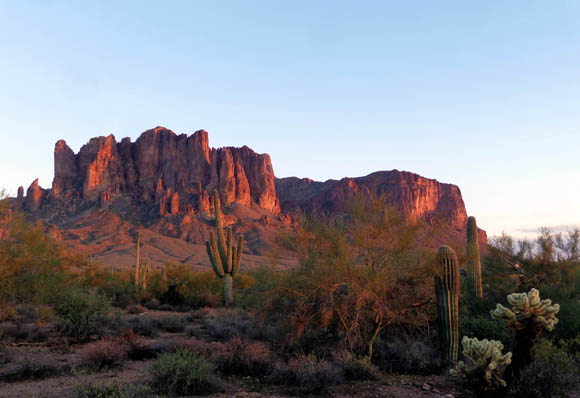Continued from the previous page.CECIL B. DAY
BUTTERFLY CENTER
This soaring glass-enclosed space is a
tropical paradise. I absolutely love it!
If it wasn't so hot and humid inside (80 F. and 74% humidity), and
often rather crowded, I'd stay in it for hours admiring the beautiful plants and
wide variety of butterflies.
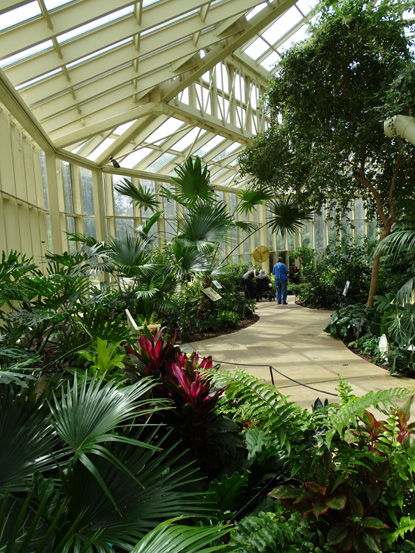
There is a whole lot of information on the Gardens'
website about the history and
construction of the conservatory and butterfly center; numbers and types of
butterflies; the very special Blue Morpho butterflies;
where the butterflies come from; USDA regulations; the
lab, transformation station, and emergence cabinets; varieties of
tropical plants; artwork in the building; outside native
butterfly gardens; classes and special events; and more.
There's no way I'm going to duplicate all that information here so
I'll give just a few interesting facts and include some photos I took
during two of my three visits this spring to the Butterfly Center when
my camera was actually recording pictures (I explained about that
little debacle in the first entry of this series).
First, let's talk about the location of the Butterfly Center on the
grounds of Callaway Gardens --
it's pretty much dead center and about halfway around the one-way road
encircling Mountain Creek Lake:
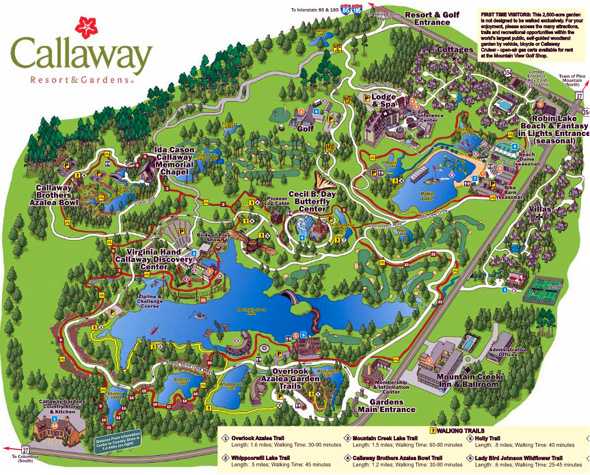
In order to avoid the crowds it's wise to head there
first thing after the gates open at 9 AM. There are fewer people then
and the butterflies are the most active before 10 AM or after 3 PM.
There is a small parking lot and some handicapped spots
in the trees behind the Butterfly Center
but the best place to park if you can walk a quarter mile is out on the
main park road between the Pioneer Log Cabin and the driveway back to the
conservatory:
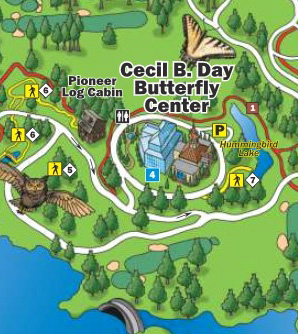
The Hydrangea Trail connects the main road with the Butterfly Center.
Here are some things you can enjoy on this path through the woods (it
was too early in late March for the hydrangeas to be blooming):
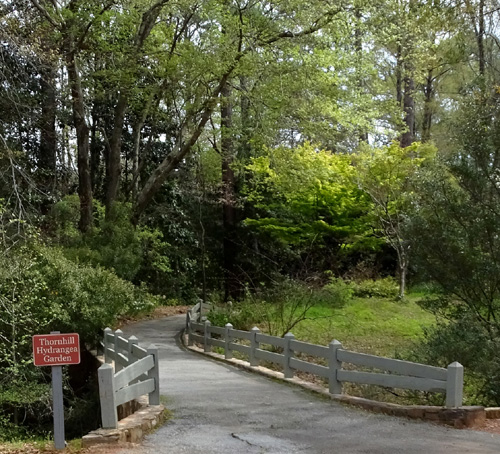

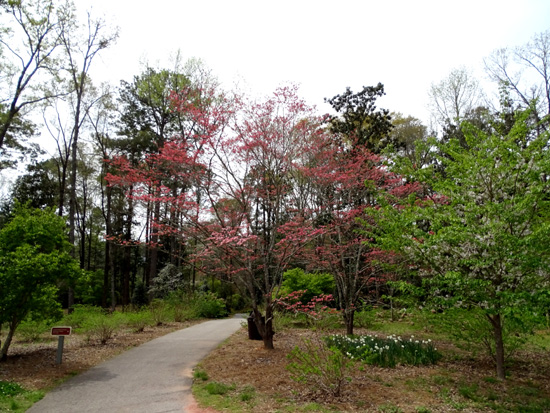
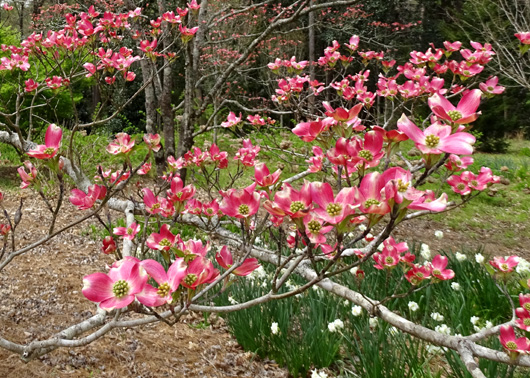
Pink dogwood
Folks who want more exercise can walk from the large Discovery Center
parking area; that's about half a mile one way on trails.
Here are some photos of the exterior of the conservatory, the rest of
the building, and landscaping:
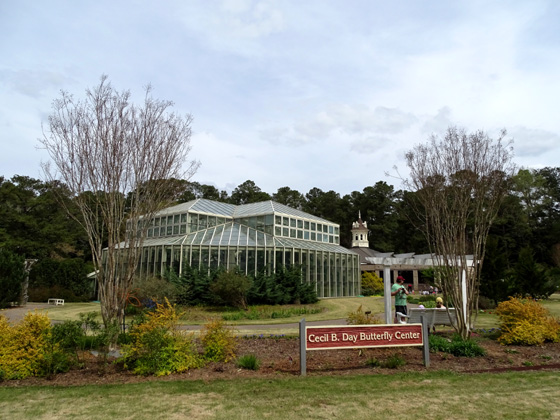
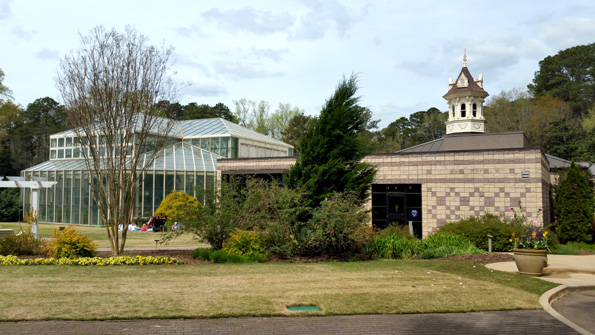
Above and below: This handsome
cupola with a flower-and-butterfly design was originally on
top of the childhood home of
Virginia Hand Callaway, co-founder of Callaway Gardens.
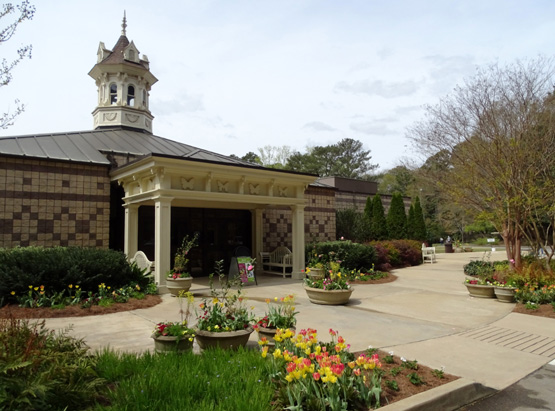
Entrance
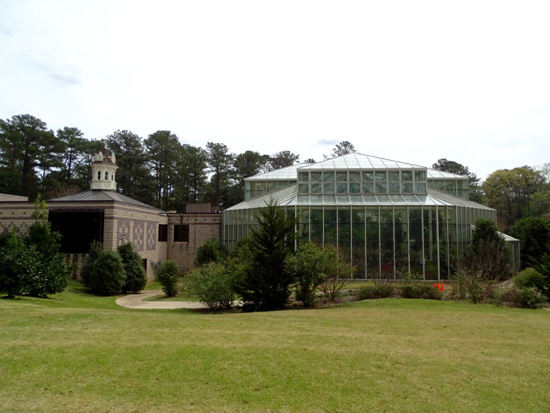
Back side of the Butterfly Center
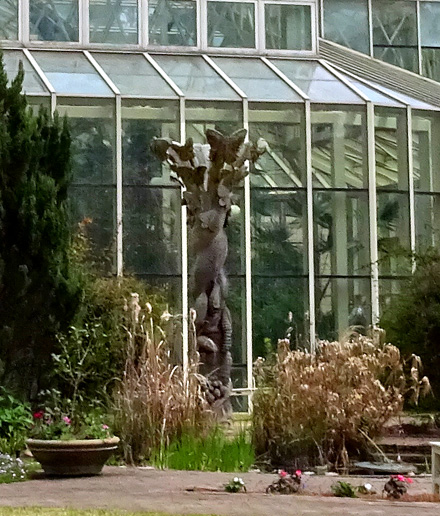
Sculptured solid teak
totem pole depicting the life cycle of
monarch butterflies
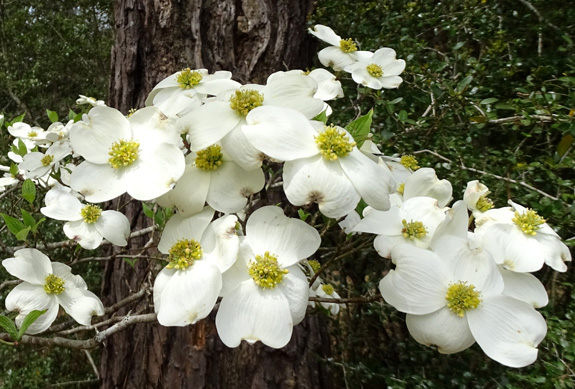
Some pretty white dogwood trees were blooming at
the edge of the woods near the Butterfly Center.
OK, let's go inside the handsome lobby and small theater
area where visitors can enjoy an interesting continuous-loop film about the Butterfly
Center before they go into the conservatory:
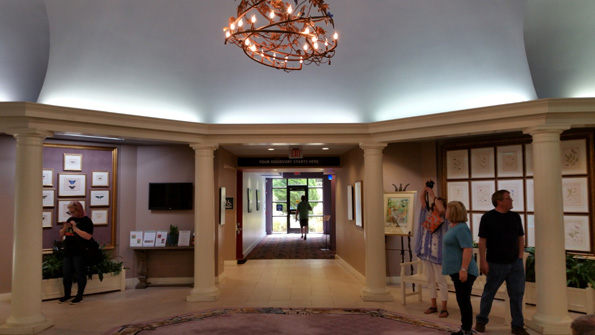
Above: The custom-designed copper
chandelier depicts the passionflower
vine, a host plant
for many butterflies.
Below: The large octagonal hand-tufted wool rug features
Georgia's state butterfly, the
Eastern Tiger Swallowtail, in the center.
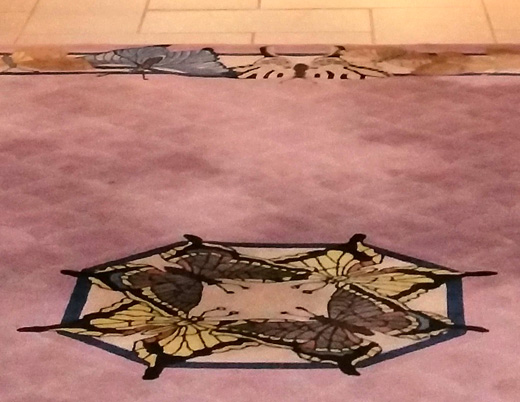
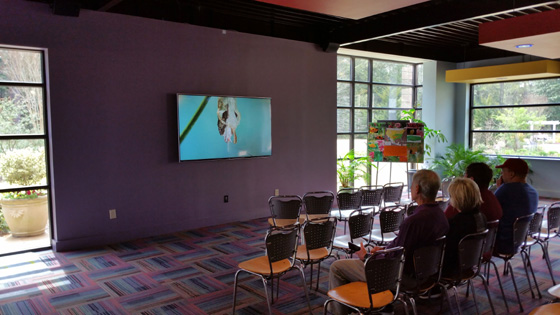
A great introduction to the
Butterfly Center
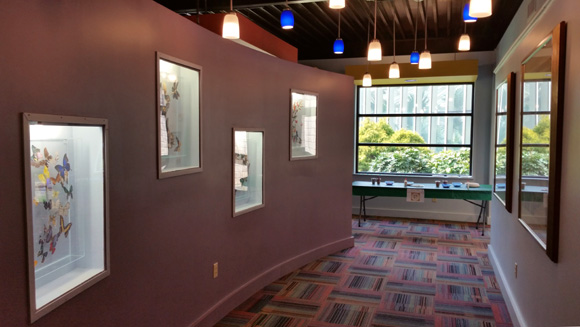
Most of the 100+ kinds of butterflies
that have been contained in the conservatory are
featured in four display cases
set into this wall. Some are shown below.
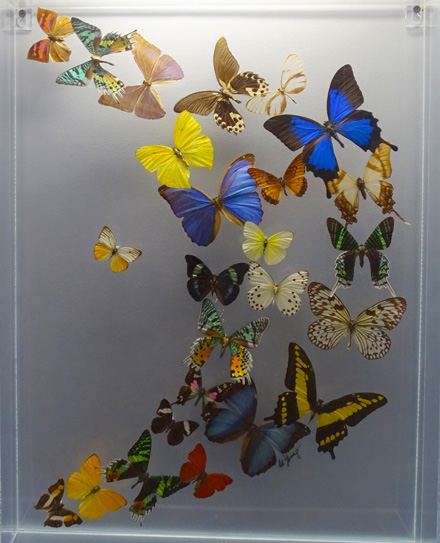
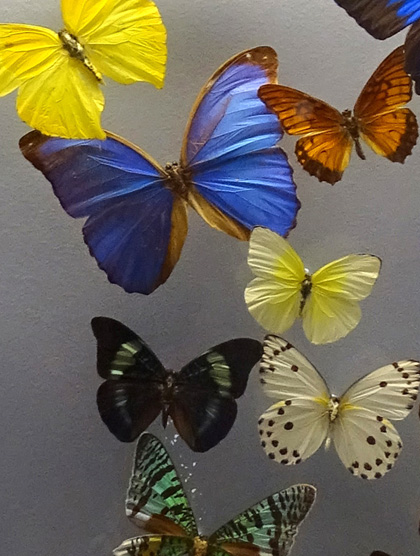
At any one time there are 1,000 to 2,000 butterflies in the
conservatory, with a continuously changing mix of from 50-100 different
species. The Center is permitted to import about 400 different species.
The butterflies come from small farmers in Costa Rica, Ecuador, El
Salvador, Kenya, Malaysia, and the Philippines, representing all the
major tropical regions of the world.
Between the lobby and conservatory, visitors pass by what is called
the Transformation Station. It is fascinating to look into the two long
emergence cabinets, the glass-fronted holding cases where butterfly chrysalids are
hung to complete their metamorphosis and emerge as butterflies:
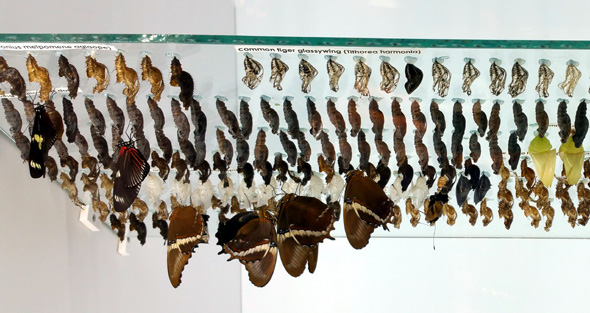
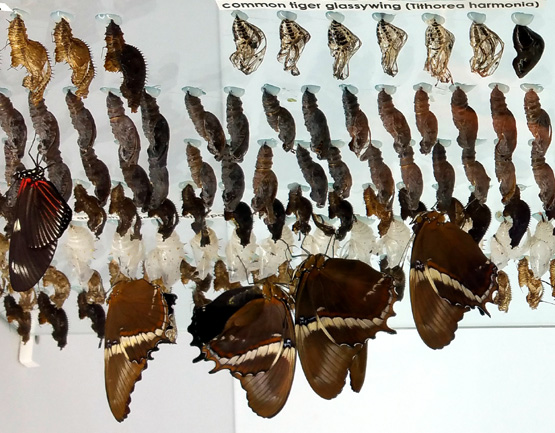
That is so totally cool, and it changes from minute to minute!!
The butterflies hang from their pupa cases for up to three hours for
their wings to completely dry, then they are released into the conservatory.
The Butterfly Center must apply to some rigid compliance standards
regulated by the USDA. The on-site laboratory unpacks, processes, and
monitors all the butterfly shipments from around the world to ensure
that no diseases or invasive parasites are introduced to the native
population of butterflies and plants.
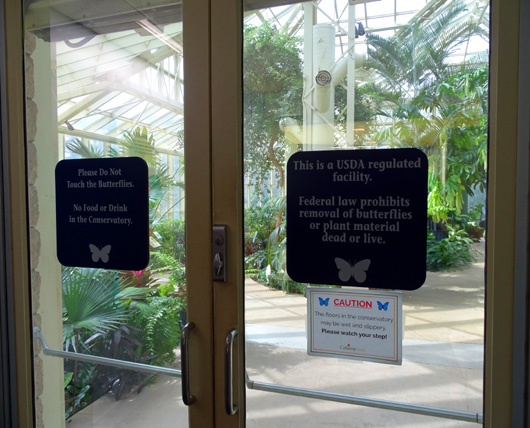
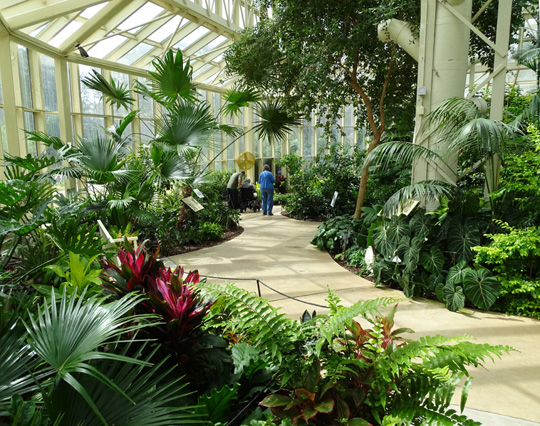
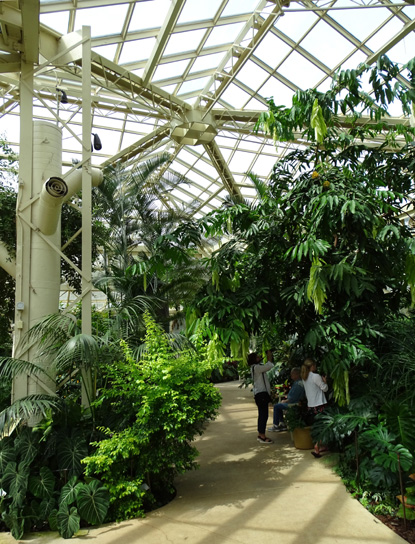
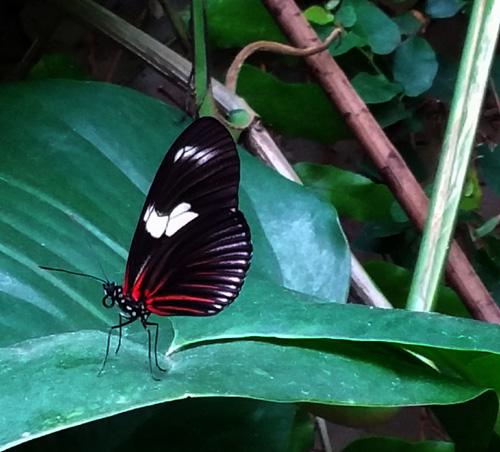
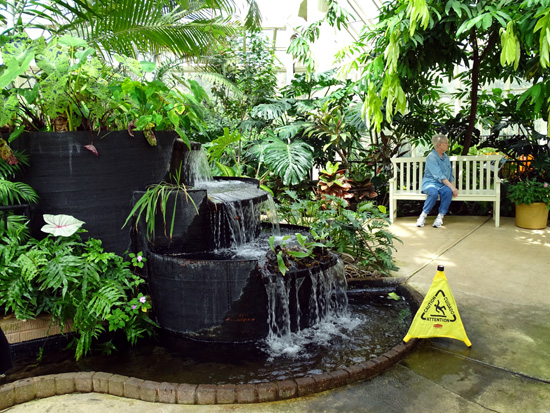
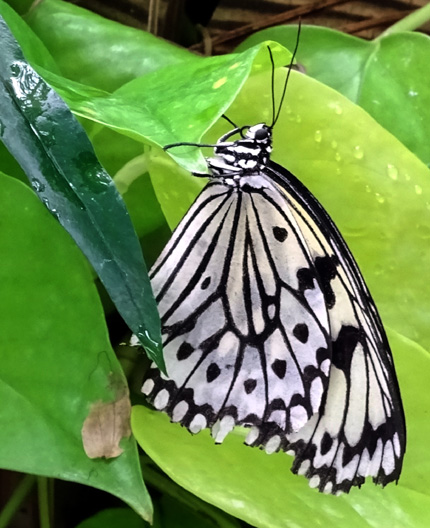
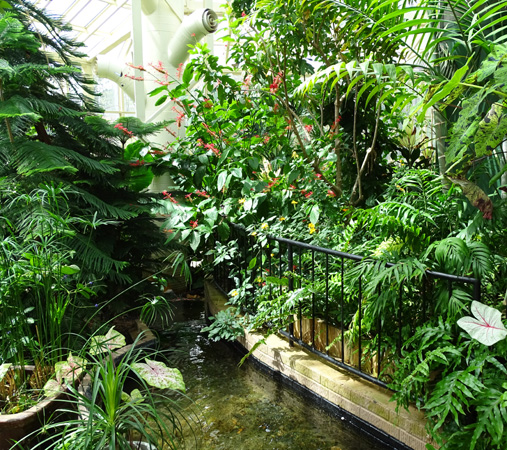
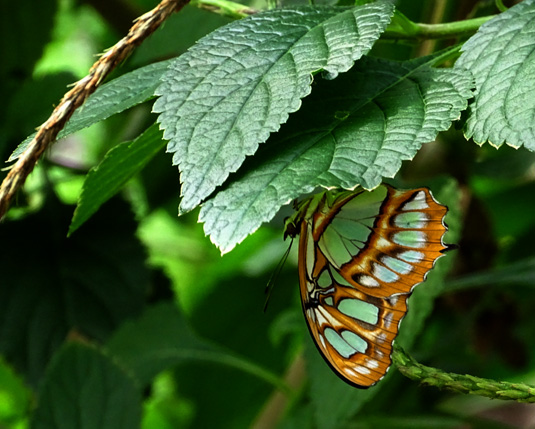
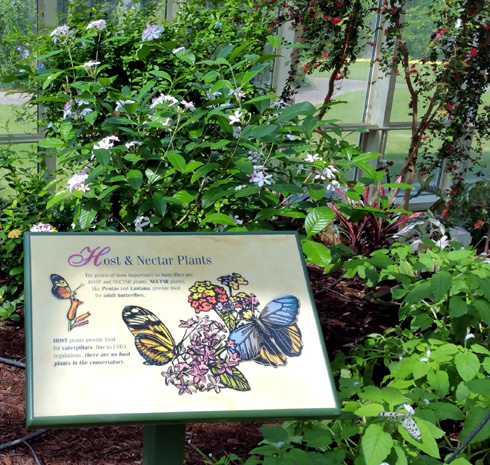
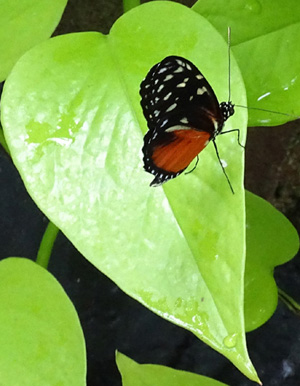
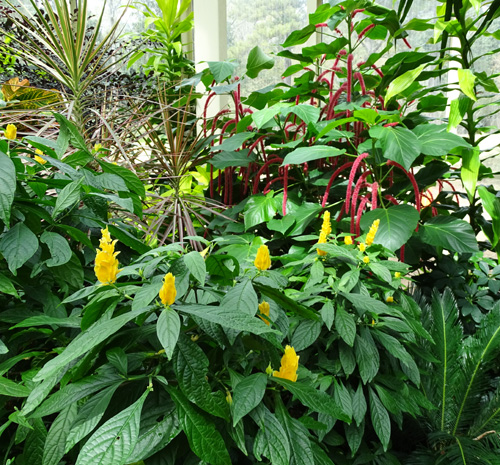
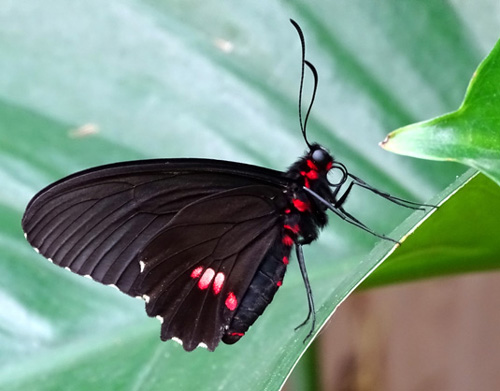
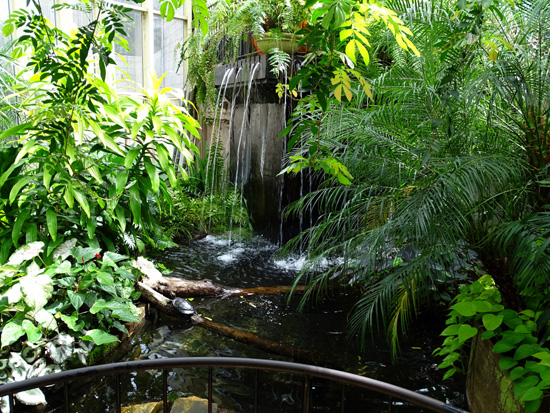
Above and below: One or
more red-eared slider turtles live in this little pool beneath the
waterfall.
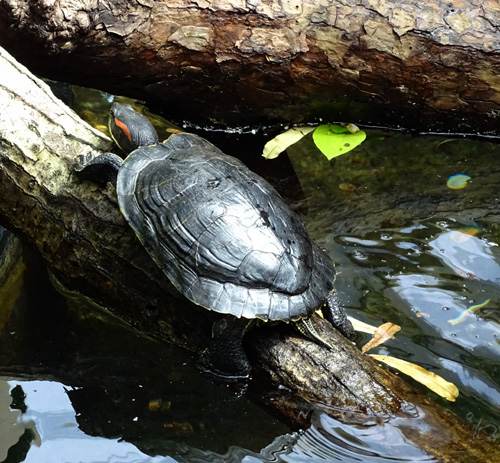
BEAUTIFUL BLUE MORPHOS
I think it's safe to say that the most popular butterfly
at Callaway Gardens is the Blue Morpho. They are featured the whole
month of September, so that tells you something. The Butterfly Center
imports extra Blue Morphos for the occasion and special events are held.
I was so fascinated with Blue Morphos after our first trip to
Callaway that I immediately did an internet search before going back
down to the gardens the next day, when I got all these pictures.
Unfortunately, they are not easy for a rank amateur like
me to photograph. Or at least, the spectacular iridescent blue on the top of
their wings isn't easy to capture when they are flying around. The earth tones
and "eyes" on the bottom of their wings is easy to
photograph when they are eating at the fruit baskets.
So here's a professional photo from Callaway Gardens'
website of a Blue Morpho that shows the
gorgeous blue color:
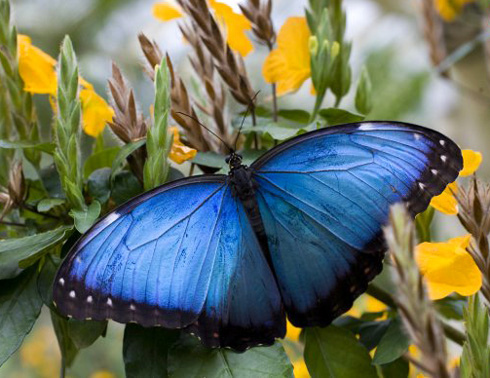
One of the interesting facts about Blue Morphos is that the shimmering
blue color isn't from pigments, but reflections of light on the
microscopic scales
of the upper wings.
The name comes from the phenomenon that while flying, the brilliant blue
side contrasts with the dull brown side and it looks like the butterfly
is appearing and disappearing. "Morpho" means to change or modify.
Blue Morphos are native to the rainforests of Central and South America.
They adapt well to the hot, humid conditions in this conservatory and
are easy to spot while eating or zinging around in the air.
This spot on the lower level of the conservatory is a good place to see
them because it's near two hanging baskets of fruit that they like to eat:
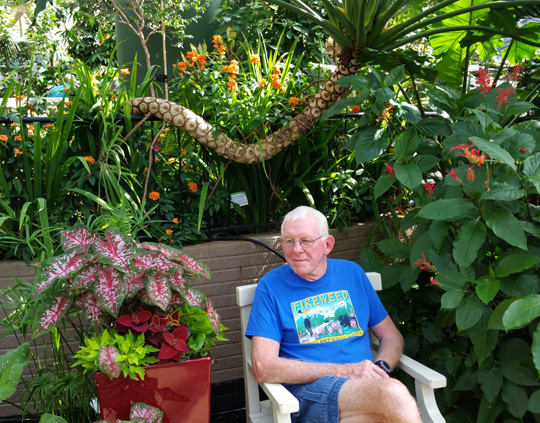
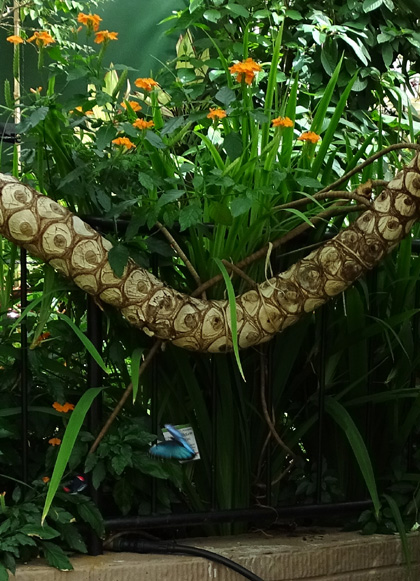
That's a Blue Morpho at the bottom but not a good shot.
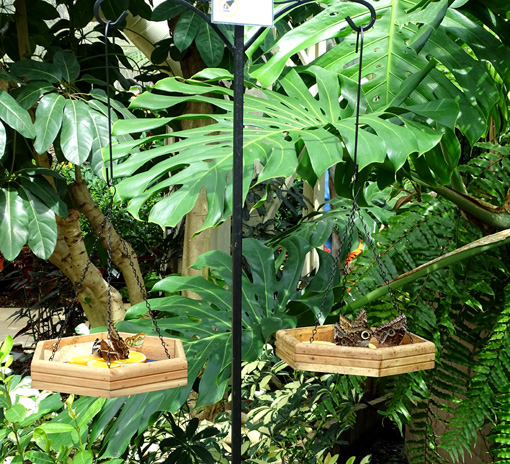
Above and below: Blue Morphos having
lunch a few feet away from Jim
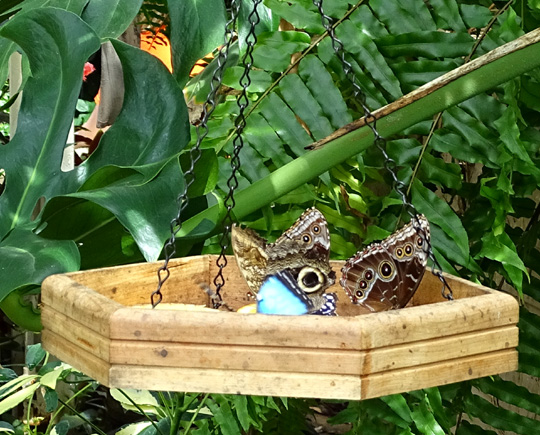
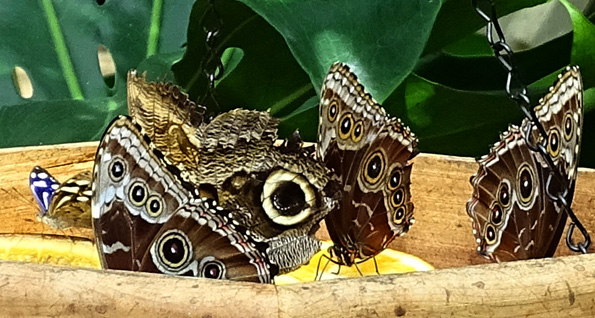
Blue Morphos' distinctive "eyes" and brown
coloring, and another smaller butterfly to the left
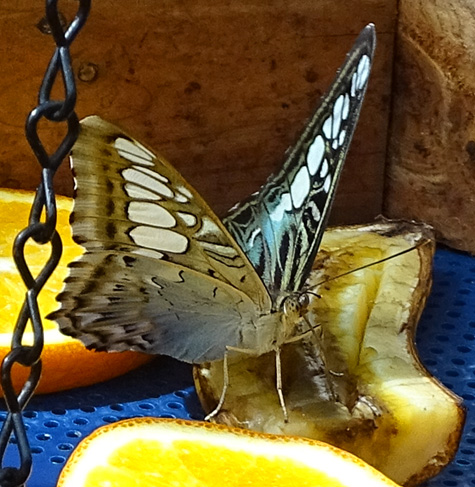
Above and below: Another type of
butterfly enjoys the fruit baskets
on the upper level of the conservatory.
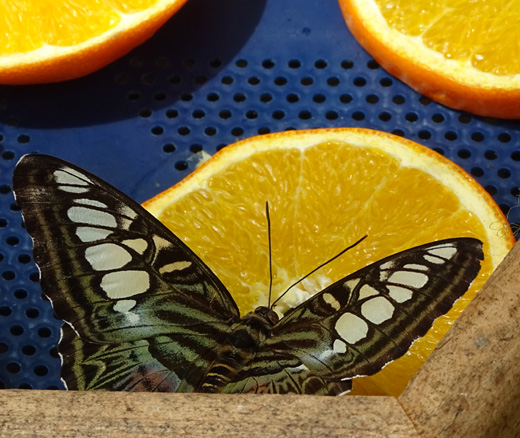
When I go back in September to see the Blue Morphos again I'll
use a rapid-fire action setting on my camera and hopefully get some
good shots of these magnificent butterflies.
Next entry: rhododendrons in bloom at Callaway
Gardens in March and April
Happy trails,
Sue
"Runtrails & Company" - Sue Norwood, Jim O'Neil,
Casey-Girl, and Holly-Pup
Previous
Next
© 2019 Sue Norwood and Jim O'Neil
